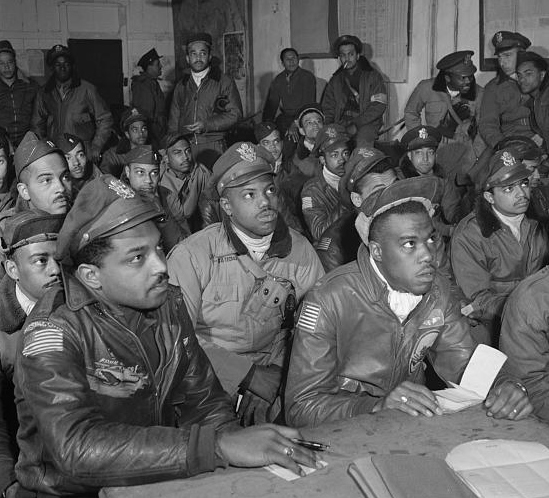By The Contemplative Genealogist©™
The dad had been an ice skater as a teen, a hobby unknown to his youngest child – a daughter raised in a climate where ice skating was rarely possible for her father and his aging heart. Confident of his musical gifts, he had also described (on the same nondescript government form) his aptitude for playing the piano – listing it as a “talent for entertainment.”
That form was one of many sent to the daughter by the National Military Personnel Records Center in St. Louis, Missouri. Its completion had been required as part of her dad’s honorable discharge from the Seabees at the close of World War II.
After making a cup of tea, she sat down and worked her way through the inch-thick file in earnest. Encountering mentions of her father’s parents and sisters, she also found documentation of the training her father had been given and copies of the various duty notifications he’d received during his time in the military.
And then she found the copy of his fingerprints.
Taken upon his 1942 entry into the service, there they were providing an intimate link from the 21st century back to the champion hugger who had died nearly 40 years earlier. Although she could no longer hold his hand, the daughter shed real tears, feeling his spirit reach out to her across time as she traced the inky swirls of his fingertips with her own. “Daddy.”
Accessing the military records of a parent or long-dead ancestor can be a profound spiritual experience for both novice and experienced family history researchers alike. Many will tell you of the emotions which still stir years after having initially viewing scraps of paper or bare bones data found in online cemetery records.
Today, thanks to the explosion of history-related websites, there are more ways than ever to uncover details about the lives of those who gave the last full measure of devotion. Free online databases have been created by the agencies which manage the cemeteries where a significant percentage of America’s veterans now rest. Many make locating a soldier’s gravesite as easy as typing his or her name into a search textbox. (See the Going Sherlock – Genealogy Research Tips section of this blog for links to these resources.)
Plus, fee-for-service research tools such as Ancestry.com and Fold3 are also proving helpful as searchers find not only the names of the veterans they are researching, but their dates of birth and death, the names of their spouses (via military pension records), the locations where individuals were residing at the time of their enlistment, the names of the commanding officers under whom they served (via muster rolls), and the specific locations where the ancestors were buried, as well as the names of the branches of service, units, and duty areas where they were stationed (via muster rolls, transport ship ledgers, casualty lists, or burial cards from state veterans affairs departments).
But it is in the hard files found at national and state archive repositories where the real “meat” of veterans’ lives still lies – waiting – begging to be discovered. According to the National Archives (NARA) website, out of the roughly 1.4 million appeals made for military records annually to the agency, only about 10 percent ask for the complete files available for individual veterans. The other 90 percent typically ask only for honorable discharge paperwork and other separation documents.
And that is a shame. Because those who have obtained the full files for their ancestors (World War II to present day) will tell you that those compiled files are the equivalent of family jewels.
These files often contain fascinating and important information related to veterans and their survivors, including social security and service numbers, dates of entry and release from active duty, character ratings by superior officers, and the names of family members designated as insurance beneficiaries. Military discharge records provide added data about whether or not veterans were ever granted leaves of absence, were ill or injured during service, their pay grades, ranks and promotions, and honors received, such as Purple Heart awards and ribbons earned for service in specific military campaigns.
The newest of military records, dating from 1917 to the present, are managed by the National Military Personnel Records Center in St. Louis, Missouri, and may be obtained by applying online or through the mail.
Older military service records are maintained by NARA in Washington, DC. These document the roles played by veterans from the volunteer state regiments which served in the interest of the federal government from 1775 to 1902 to those who served in the Regular Army (enlisted personnel from 1789-October 31, 1912; officers from 1789 to June 30, 1917), Marine Corps (enlisted personnel from 1798-1904; some officers from 1798-1895), Navy (enlisted personnel from 1798-1885; officers from 1798-1902), Coast Guard (Revenue Marine, the Life-Saving Service, and the Lighthouse Service from 1791-1919), and Confederate States (1861-1865).
NARA also provides access to bounty land warrant applications filed based on wartime service (1775-1855) and pension claims filed for federal military service from 1775-1916.
These pre-World War I records may also be obtained online or by mail. The cost generally ranges from $30 to $80, depending on the type of file and amount of research involved.
Your buried treasure is waiting. Don’t miss out.
Photo: American men flocked to Army and Navy recruiting stations across the U.S. following the bombing of Pearl Harbor on December 7, 1941. The lines were particularly long in New York City in January of 1942. Source: Farm Security Administration – Office of War Information Photograph Collection, U.S. Library of Congress (public domain).











You must be logged in to post a comment.